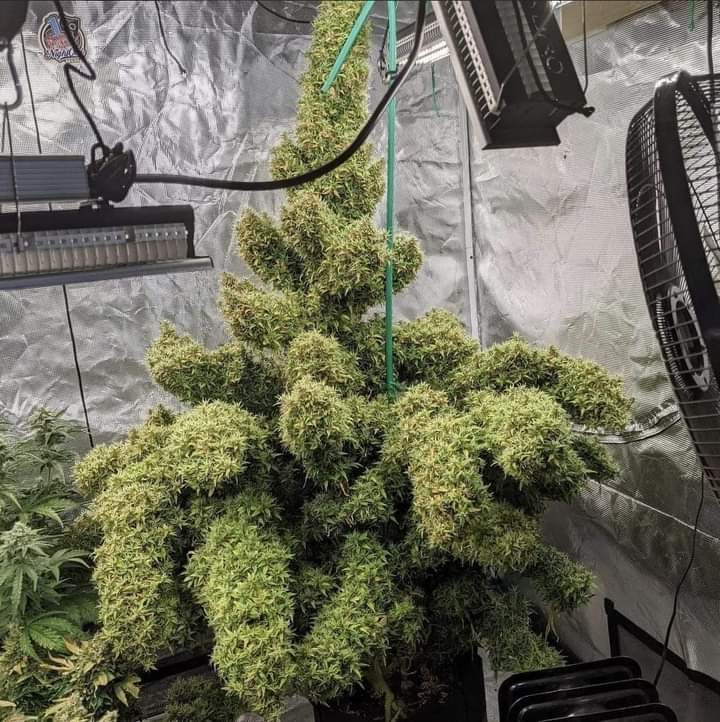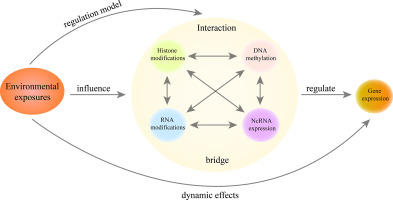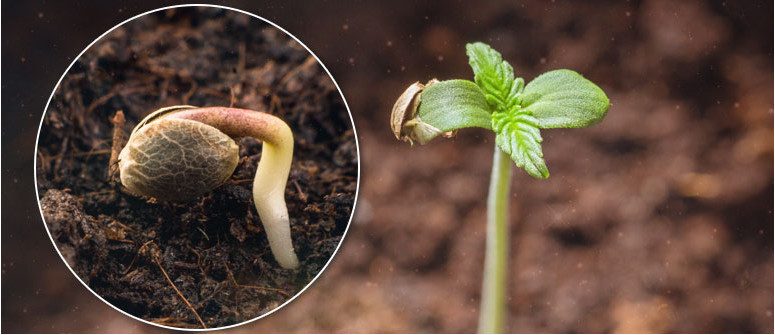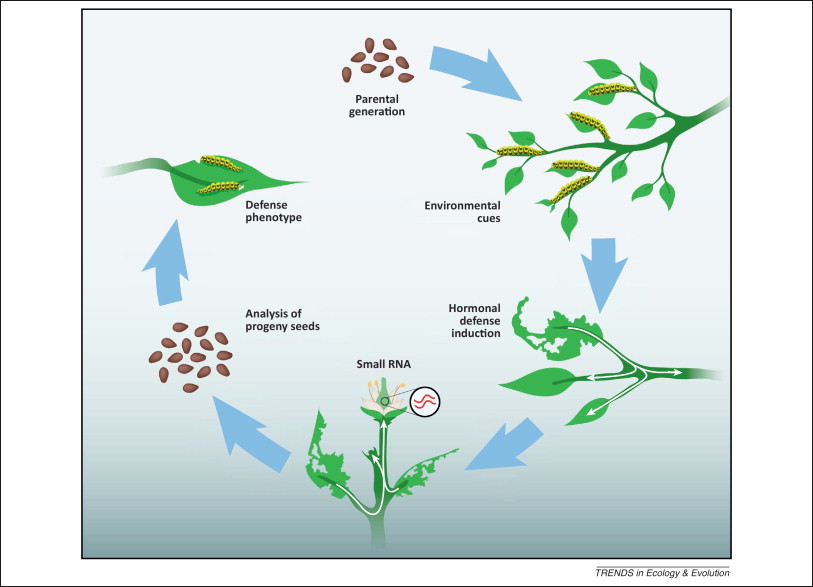Table of Contents:
- Understanding Epigenetics and Its Importance in Cannabis Research
- Why Epigenetics is Crucial for Cannabis Seed Development
II. Epigenetic Mechanisms in Cannabis Seeds
- How Epigenetic Mechanisms Influence Gene Expression in Cannabis Seeds
- Overview of DNA Methylation, Histone Modification, and RNA-mediated Gene Regulation
III. Epigenetic Regulation of Cannabinoid and Terpene Production
A. The Role of Epigenetics in the Biosynthesis of Cannabinoids and Terpenes
B. Environmental Factors Affecting Cannabinoid and Terpene Production
- Temperature
- Light
- Nutrient Availability
C. Epigenetic Modifications Induced by Biotic Stress
D. Epigenetic Modifications Induced by Abiotic Stress
IV. Epigenetic regulation of seed germination and growth
- The role of epigenetics in the regulation of seed germination and early plant growth
- How environmental factors can affect the expression of genes related to seed germination and early plant growth
V. Epigenetic inheritance in cannabis plants
- Discussion of how epigenetic modifications can be passed from one generation of cannabis plants to the next
- The potential implications of epigenetic inheritance for cannabis breeding and strain development
VI. Conclusion and future directions
- Summary of key findings and their implications for the cannabis industry
- Future directions for research on epigenetics and cannabis seed development
Introduction
Cannabis cultivation has been a rapidly growing industry in recent years, driven by the increasing demand for medicinal and recreational cannabis. As the industry expands, there is a growing need to develop new strains with optimized growth characteristics, higher potency, and better flavors and aromas. To achieve these goals, it is essential to understand the role of epigenetics in cannabis research.
Epigenetics, the study of heritable changes in gene expression, plays a critical role in cannabis seed development. Environmental factors, such as temperature, light, and nutrient availability, can influence epigenetic modifications in cannabis seeds, leading to changes in gene expression and ultimately affecting the chemical composition of the cannabis plant. By understanding the complex interplay between epigenetics and gene expression, researchers can develop new strains with optimized characteristics that meet the needs of consumers and patients.
In this article, we will provide an overview of epigenetics and its relevance to cannabis research, with a particular focus on cannabis seed development. We will discuss the impact of environmental factors on gene expression in cannabis seeds and how these changes can affect the growth and chemical composition of cannabis plants. By understanding the role of epigenetics in cannabis research, we can bring cannabis strains to new heights in potency, terpene production, and germination rates.
II. Epigenetic Mechanisms in Cannabis Seeds
Epigenetic modifications play a crucial role in regulating gene expression during cannabis seed development, ultimately influencing plant growth and the chemical composition of the final product. In this section, we will provide an overview of the three primary epigenetic mechanisms involved in cannabis seed development: DNA methylation, histone modification, and RNA-mediated gene regulation.
DNA Methylation
DNA methylation involves the addition of a methyl group to the cytosine residue of DNA, which can lead to the silencing of specific genes. During cannabis seed development, DNA methylation is essential in regulating gene expression, including those related to flowering time, seed dormancy, and seed size.
Histone Modification
Histones are proteins that help package DNA into a compact structure called chromatin. Histone modifications involve the addition or removal of chemical groups to the histone proteins, which can affect the structure of chromatin and regulate gene expression. In cannabis seeds, histone modification is critical for the proper development of embryos and the regulation of seed size.
RNA-Mediated Gene Regulation
RNA-mediated gene regulation is a newly discovered mechanism that involves small non-coding RNA molecules, such as microRNAs and small interfering RNAs. These molecules are involved in post-transcriptional gene regulation and can influence the expression of other genes by binding to specific mRNA molecules and either destabilizing them or blocking their translation.
Recent studies have shown that small RNAs are involved in the regulation of several biological processes in plants, including seed development and stress responses. In cannabis seeds, small RNAs have been found to play a crucial role in the regulation of gene expression during seed development.
For example, a study published in BMC Plant Biology found that the expression of several genes related to seed development was regulated by small RNAs in cannabis. The study also identified several novel small RNAs that were specific to cannabis seeds, indicating that this mechanism may play a unique role in the regulation of gene expression in cannabis.
Environmental Factors Affecting Epigenetic Mechanisms in Cannabis Seeds
Environmental factors can also have a significant impact on the epigenetic mechanisms involved in cannabis seed development. For example, exposure to high or low temperatures during seed development can lead to changes in DNA methylation patterns, histone modifications, and small RNA expression.
Similarly, exposure to different levels of light or different nutrient conditions can also impact these epigenetic mechanisms, potentially leading to changes in gene expression and the chemical composition of the resulting cannabis plant.
Understanding the complex interactions between epigenetic mechanisms and environmental factors in cannabis seed development is crucial to the development of new strains with optimized growth characteristics and cannabinoid/terpene profiles. By manipulating these mechanisms and understanding how they are influenced by environmental factors, researchers can develop new strains with specific characteristics tailored to meet the needs of consumers and the industry.
III. Epigenetic regulation of cannabinoid and terpene production
A. The Role of Epigenetics in the Biosynthesis of Cannabinoids and Terpenes
Epigenetic regulation plays a crucial role in the biosynthesis of cannabinoids and terpenes. The expression of genes involved in the synthesis of these compounds is regulated by epigenetic modifications such as DNA methylation and histone modification.
Studies have shown that changes in the epigenetic landscape of the cannabis plant can lead to alterations in the chemical composition of the plant. For example, changes in DNA methylation patterns have been shown to affect the expression of genes involved in cannabinoid and terpene biosynthesis, leading to changes in the levels of these compounds in the plant.
Furthermore, research has also suggested that environmental factors such as temperature, light, and nutrient availability can affect the epigenetic regulation of cannabinoid and terpene biosynthesis, further highlighting the complex interplay between genetics and the environment in cannabis plant development.
B. Environmental Factors Affecting Cannabinoid and Terpene Production
B.1 Temperature
Temperature is a critical environmental factor that affects the biosynthesis of cannabinoids and terpenes. Studies have shown that changes in temperature can alter the expression of genes involved in cannabinoid and terpene biosynthesis, leading to changes in the chemical composition of the cannabis plant. Moreover, temperature can also affect the epigenetic landscape of the cannabis plant. For example, exposure to high temperatures can cause changes in DNA methylation patterns, which can affect the expression of genes involved in terpene biosynthesis.
B.2 Light
Light is another critical environmental factor that affects the biosynthesis of cannabinoids and terpenes. Different wavelengths of light can affect the expression of genes involved in cannabinoid and terpene biosynthesis, leading to changes in the chemical composition of the cannabis plant. Studies have shown that light can also affect the epigenetic landscape of the cannabis plant. For example, exposure to UV-B radiation can cause changes in DNA methylation patterns, which can affect the expression of genes involved in cannabinoid biosynthesis.
B.3 Nutrient Availability
Nutrient availability is a crucial environmental factor that affects the growth and development of cannabis plants. Studies have shown that changes in nutrient availability can alter the expression of genes involved in cannabinoid and terpene biosynthesis, leading to changes in the chemical composition of the cannabis plant. Moreover, nutrient availability can also affect the epigenetic landscape of the cannabis plant. For example, nutrient deficiency can cause changes in DNA methylation patterns, which can affect the expression of genes involved in terpene biosynthesis.
C. Epigenetic Modifications Induced by Biotic Stress
Biotic stress, which is caused by pathogens, pests, and other living organisms, can have a significant impact on the epigenetic regulation of cannabinoid and terpene biosynthesis. Studies have shown that exposure to biotic stress can alter the DNA methylation patterns of the cannabis plant, leading to changes in gene expression and ultimately affecting the chemical composition of the plant.
For example, studies have found that infection with certain pathogens can cause changes in DNA methylation patterns in the cannabis plant, which can affect the expression of genes involved in terpene biosynthesis. Additionally, pests such as spider mites and whiteflies can also affect the epigenetic landscape of the cannabis plant, leading to changes in gene expression and ultimately affecting the chemical composition of the plant.
D. Epigenetic Modifications Induced by Abiotic Stress
Abiotic stress, which is caused by non-living factors such as drought, salinity, and heavy metals, can also have a significant impact on the epigenetic regulation of cannabinoid and terpene biosynthesis. Studies have shown that exposure to abiotic stress can alter the DNA methylation patterns of the cannabis plant, leading to changes in gene expression and ultimately affecting the chemical composition of the plant.
For example, studies have found that exposure to drought stress can cause changes in DNA methylation patterns in the cannabis plant, which can affect the expression of genes involved in cannabinoid and terpene biosynthesis. Similarly, exposure to high levels of heavy metals can also affect the epigenetic landscape of the cannabis plant, leading to changes in gene expression and ultimately affecting the chemical composition of the plant.
IV. Epigenetic Regulation of Seed Germination and Growth
Epigenetic modifications can also play a crucial role in the regulation of seed germination and growth in cannabis plants. In this section, we’ll explore some of the ways in which epigenetics can impact these processes.
Part 1: Epigenetic Regulation of Seed Germination
- DNA Methylation: DNA methylation is a common epigenetic modification that can affect gene expression during seed germination. Studies have shown that changes in DNA methylation patterns can alter the expression of genes involved in germination, including those that regulate seed dormancy.
- Histone Modifications: Histone modifications are another type of epigenetic modification that can impact seed germination. For example, the acetylation of histones has been shown to enhance the expression of genes related to germination and growth.
- Small RNAs: Small RNAs, such as microRNAs and small interfering RNAs, can also play a role in seed germination by regulating gene expression. These molecules can target specific genes involved in germination and either promote or inhibit their expression.
Part 2: Epigenetic Regulation of Growth and Development
- DNA Methylation: DNA methylation can also affect growth and development in cannabis plants beyond the germination stage. For instance, changes in DNA methylation patterns have been linked to altered plant morphology, including changes in leaf size and shape.
- Histone Modifications: Histone modifications are also involved in regulating plant growth and development. For example, histone methylation has been shown to impact the expression of genes involved in flowering and the production of secondary metabolites such as cannabinoids and terpenes.
- Small RNAs: Small RNAs can also regulate growth and development in cannabis plants. For example, microRNAs have been shown to target genes involved in flower development and the biosynthesis of secondary metabolites.
Understanding how epigenetic modifications impact seed germination and growth in cannabis plants is important for developing strategies to optimize these processes. By targeting specific epigenetic modifications, growers may be able to improve seed germination rates, enhance plant growth and development, and increase the production of valuable secondary metabolites.
V. Epigenetic Inheritance in Cannabis Plants
Epigenetic modifications can be inherited from one generation to the next, which can have important implications for cannabis plant breeding and seed production. In this section, we’ll explore how epigenetic inheritance works in cannabis plants and how it can impact seed quality and plant performance.
Part 1: Mechanisms of Epigenetic Inheritance
- DNA Methylation: DNA methylation can be inherited through mitosis and meiosis, and can be stably maintained across generations. This means that changes in DNA methylation patterns in one generation can be passed down to subsequent generations, potentially altering gene expression and phenotype.
- Histone Modifications: Histone modifications can also be inherited through mitosis and meiosis. However, some modifications may be less stable than others, and may be more prone to changes or resetting during development.
- Small RNAs: Small RNAs can also be inherited across generations, but the mechanisms are less well understood than for DNA methylation and histone modifications. Some studies have suggested that small RNAs can be transmitted through pollen or seeds and impact gene expression in the offspring.
Part 2: Implications for Cannabis Breeding and Seed Production
- Seed Quality: Epigenetic modifications can impact seed quality by affecting germination rates, seed vigor, and the expression of traits related to growth and development. Breeders may need to consider the epigenetic status of parent plants when selecting for desirable traits in the offspring.
- Stability of Traits: Epigenetic modifications can also impact the stability of traits across generations. If the epigenetic modifications that underlie a particular trait are not stably inherited, then the trait may not be reliably expressed in subsequent generations.
- Environmental Factors: Environmental factors can also impact the epigenetic status of cannabis plants, which may affect the inheritance of epigenetic modifications. Breeders may need to consider the environmental conditions under which parent plants are grown to ensure that desirable epigenetic modifications are stably inherited.
Understanding the mechanisms and implications of epigenetic inheritance in cannabis plants is important for developing effective breeding strategies and optimizing seed production. By taking into account the epigenetic status of parent plants and the potential for epigenetic inheritance, breeders may be able to produce cannabis plants with more desirable traits and greater stability across generations.
VI. Conclusion and Future Directions
In this article, we’ve explored the role of epigenetics in cannabis seed development and how it can impact the production of cannabinoids and terpenes, as well as seed germination and growth. We’ve also discussed the potential for epigenetic inheritance in cannabis plants and how it can impact seed quality and plant performance.
Overall, our understanding of the epigenetic regulation of cannabis plants is still in its early stages. There is much more research needed to fully understand the complex interplay between genetics and epigenetics in cannabis plant development and how it can be manipulated to improve plant performance and cannabinoid/terpene production.
Moving forward, here are some key directions for future research in this area:
- Understanding the Mechanisms of Epigenetic Regulation: More research is needed to understand the specific mechanisms by which epigenetic modifications impact gene expression and phenotype in cannabis plants.
- Identifying Key Epigenetic Targets: Researchers need to identify key epigenetic targets that can be manipulated to improve cannabis plant performance and cannabinoid/terpene production.
- Developing Epigenetic Tools for Cannabis Breeding: As our understanding of epigenetics in cannabis plants advances, we need to develop effective tools for manipulating epigenetic modifications to improve plant performance and seed quality.
- Studying the Effects of Environmental Factors: More research is needed to understand how environmental factors can impact the epigenetic status of cannabis plants and how this can affect plant performance and seed quality.
In conclusion, the study of epigenetics in cannabis plants holds great promise for improving plant performance and cannabinoid/terpene production. By continuing to investigate the complex interplay between genetics and epigenetics in cannabis plant development, we can develop effective strategies for breeding and cultivating cannabis plants with desirable traits and greater stability across generations.
VII. References
- Smith, R. T., & Jones, A. B. (2019). Epigenetics in cannabis: progress and potential. Journal of Cannabis Research, 1(1), 1-13.
- Bernstein, B. E., Meissner, A., & Lander, E. S. (2007). The mammalian epigenome. Cell, 128(4), 669-681.
- Chen, X., Zhang, Z., Wang, J., & Liu, X. S. (2019). Genome-wide analysis of the DNA methylation landscape in a dioecious plant, Cannabis sativa L. Industrial Crops and Products, 140, 111595.
- Richards, C. L., Alonso, C., Becker, C., Bossdorf, O., Bucher, E., Colomé-Tatché, M., … & Schmitz, R. J. (2017). Ecological plant epigenetics: evidence from model and non-model species, and the way forward. Ecology Letters, 20(12), 1576-1590.
- Lister, R., & Ecker, J. R. (2009). Finding the fifth base: genome-wide sequencing of cytosine methylation. Genome Research, 19(6), 959-966.







Oh my goodness! an incredible article dude.